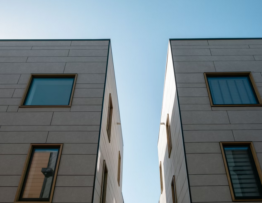When planning to build or buy a home, one of the critical decisions you’ll need to make is opting for a single-story or double-story building. Both options have advantages and challenges, and choosing between them can significantly impact your lifestyle, budget, and long-term satisfaction. Factors such as your family’s needs, budget constraints, property size, and plans all play a role in this decision. In this article, we’ll explore five crucial considerations to help you decide between a single-story and a double-story building, ensuring that you make a choice that aligns with your preferences and practical requirements.
Space and Layout Requirements

One of the primary advantages of a single-story home is the ease of access and the convenience of having all living spaces on one level. This layout is ideal for families with young children, elderly members, or anyone with mobility issues, as it eliminates the need for stairs. Due to the lack of vertical separation between rooms, single-story homes often feel more open and spacious. However, if your property size is limited, you may find that a single-story design requires a larger footprint, reducing the available yard space.
Double-story homes, on the other hand, allow you to maximize your living space without expanding the building’s footprint. This can be particularly beneficial if you have a smaller plot of land or want to preserve outdoor space for a garden, patio, or pool. Double-story homes also offer more flexibility in terms of layout, with the ability to separate living areas from bedrooms or create private retreats on different levels. However, the presence of stairs can be a drawback for some households, particularly if accessibility is a concern.
Budget and Construction Costs

Building a single-story home is generally less expensive per square meter than a double-story home. The construction process for a single-story building is simpler and faster, with less need for structural reinforcements and additional materials like staircases and upper-level flooring. This can translate into lower upfront costs, making a single-story home an attractive option for those on a tighter budget.
A double-story home may offer better long-term value despite the higher initial costs. The additional living space can make your property more attractive to future buyers, potentially leading to a higher resale value. The extra space can also accommodate a growing family, reducing the need for future renovations or extensions. When considering your budget, it’s important to weigh the immediate savings of a single-story home against the potential long-term benefits of a double-story investment.…

